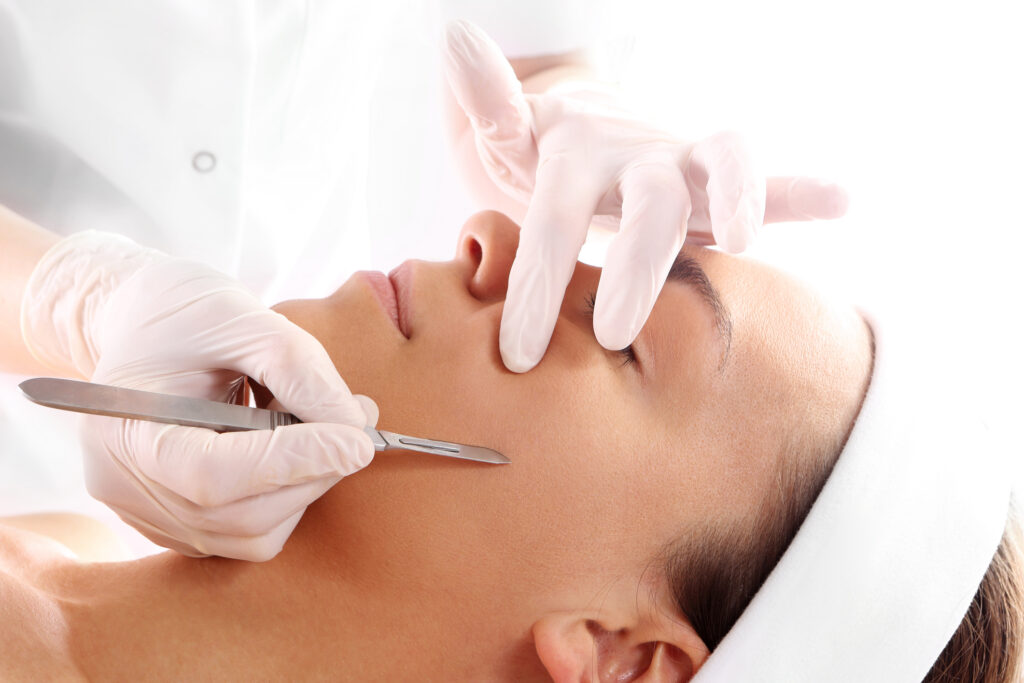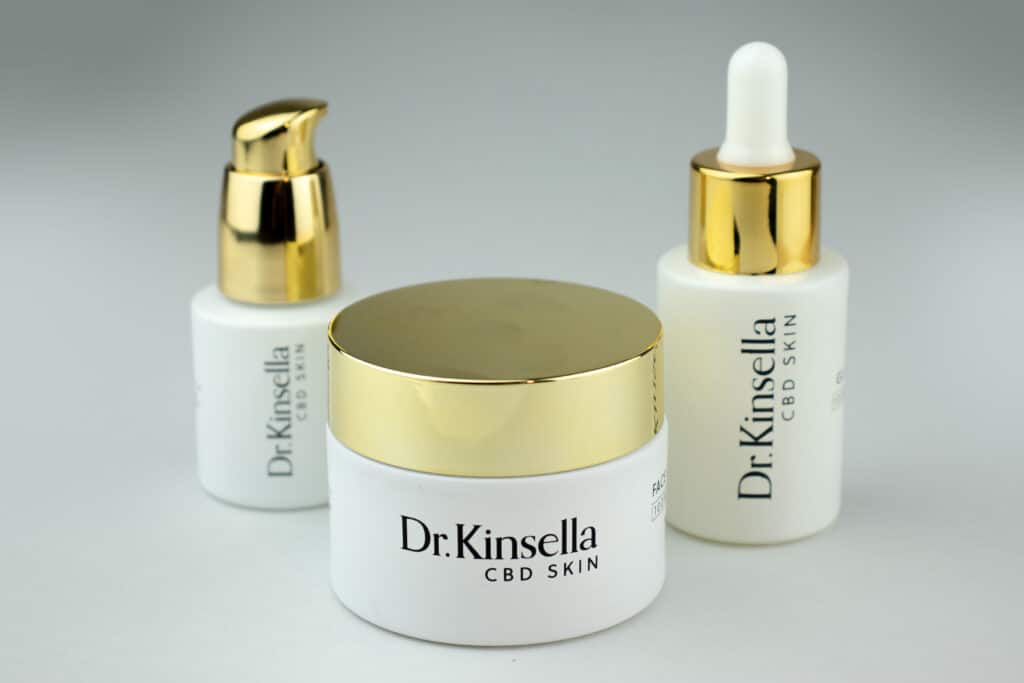GLOW OIL
FACE CREAM
EYE SERUM
Pros And Cons Of Dermaplaning: Is This Procedure Really Worth It?
Key points
- Dermaplaning is a procedure during which vellus hair is scraped away from the skin along with the outer skin layer. It’s claimed to make the skin smooth and soft and even out the skin tone, all of which is supposed to make the makeup on your face look more natural and help your skin glow.
- Dermaplaning can be a very risky procedure that comes with different side effects and dangers. The scrapping of the outer skin layer damages the skin barrier, which makes it more prone to burns, scars, and infection. Plus, vellus hair is often confused with regular hairs, which can result in the hair growing back thicker after the procedure.
- Dermaplaning can be harmful to people with different skin conditions, including acne and cold sores, because the treatment can cause bacteria to spread out to other areas of the skin. It’s also not recommended for people with sensitive skin.
- Instead of using risky procedures like dermaplaning, you can try effective skincare products that deliver virtually the same effects without any of the risks. For targeting ageing signs and evening out skin texture, try Dr. Kinsella products, which are made from natural premium-quality ingredients that nourish the skin and leave it glowing.
While dermaplaning has invaded our social media feeds in recent years, this skincare procedure has actually been around for years. You may have come across it when searching for how to remove vellus hair, or “peach fuzz”, which many people feel insecure about. This procedure is supposed to help you get rid of unwanted hairs as well as remove dead skin cells since it works similarly to exfoliators. While all of it sounds like a great way to take care of your skin, dermaplaning has its pitfalls and can even leave you with catastrophic side effects. In this article, we’ll take a closer look at dermaplaning, how it works, and its pros and cons.

What Is Dermaplaning
Dermaplaning is one of the methods of removing facial hair, which has become extremely popular over the last few years. But it is actually a superficial exfoliation treatment, and hair removal is one of its results. During the procedure, you’re essentially shaving off vellus hair and scraping away the top skin layers, which makes the skin more smooth and soft. It works similarly to shaving but uses a gentle blade at a 45-degree angle. This procedure can be done both at home and by a professional. However, this procedure is not for everyone, and there are some drawbacks you should be aware of before trying it.
Dermaplaning: Pros And Cons
Benefits Of Dermaplaning Treatment
Because dermaplaning exfoliates the outer skin layers, it improves the skin’s texture. This will help your makeup go on more smoothly and minimise unevenness. Because with dermaplaning, we remove dead skin cells, the procedure helps skin care products to penetrate through the skin barrier more effectively. Plus, it’s a noninvasive procedure that doesn’t require any recovery time. This means that you can put on makeup and go to events in as little as 24 hours after dermaplaning.
The most widely claimed advantage of dermaplaning is that the hair doesn’t grow back thicker, unlike after waxing or tweezing. That’s because tweezing and waxing usually remove the papilla – the bottom portion of hair follicles. When the papilla regrowths, it causes hair to grow back thicker.
Downsides Of Dermaplaning Treatment
Dermaplaning is not for everyone, and there’s a risk of some serious side effects. Some of the common ones include:
Breakouts
People with acne should be very careful with dermaplaning because even though exfoliation helps to open up clogged pores, it can also cause the bacteria to spread even more aggressively. Dermaplaning also leaves the skin more exposed, which makes it prone to bacterial infections.
Redness And Irritation
It’s not uncommon to feel redness, itchiness, or see skin discolouration a few days after the procedure because, after all, dermaplaning involves using a blade.
Skin Discolouration
This procedure also makes the skin more prone to damage from sunlight, which can then result in hyperpigmentation and skin discolouration.
Dry Skin
Dermaplaning interferes with the skin’s protective barrier, which can leave it dry or flaky.
Scars And Cuts
Accidents also take place with dermaplaning, which means an unsuccessful procedure may leave you with scarring or cuts. It’s also common for patients to use dermaplaning to remove vellus hair when they don’t really need to do it. When the wrong hair type is cut during the procedure, it can result in thicker regrowth.
Dermaplaning is not as effective as intense exfoliation treatments since it targets only top skin layers. This treatment also makes the skin more exposed to free radicals, which are the leading cause of premature ageing. Depending on how much vellus hair you have, you should not perform dermaplaning more than 1-2 times per month.
Why Dermaplaning May Be Dangerous
Keep in mind that while some side effects of dermaplaning are normal and go away after a few days, sometimes, the treatment goes wrong, which can result in dangerous side effects. Even when carried out by a professional, there’s always a risk that the procedure may go wrong.
Some people are not recommended to undergo dermaplaning, including those suffering from acne, cold sores, sensitive skin, or recent sunburns. Dermaplaning is also not safe for people who took Accutane or isotretinoin within the last 6 months.
Besides the potential risk of leaving your skin scarred and inflamed, dermaplaning can cause your skin to become too sensitive, and your favourite skincare products may end up irritating it even more.
It’s also recommended to avoid using a hair dryer after the treatment because your skin will be more prone to burns.
Products To Avoid Before And After Dermaplaning
It’s recommended to avoid the following skin care products before and after the procedure:
- Retinoids should be avoided for 3-5 days before dermaplaning
- Makeup is prohibited for 24 hours after the procedure
- Scrubs shouldn’t be used for 2-3 days after the procedure
- Make sure to wear SPF after the treatment to avoid sunburns
Dermaplaning Alternatives For Smooth Skin
If you want to use dermaplaning to improve your skin texture and refresh it, there are some safer options you can try. For instance, there are a lot of exfoliating products that deliver the same results but are much safer and don’t require long recovery times.
Including proper premium-quality anti-ageing skincare products in your routine may help you to achieve smooth and soft skin without going through unnecessary and risky procedures. For example, Dr. Kinsella product line features a face cream, glow oil, and eye serum which successfully manage fine lines, hyperpigmentation, and wrinkles and make your skin smooth and hydrated. Formulated with premium ingredients, these products include antioxidants, natural oils, and other active components that penetrate the skin, leaving it glowing and revitalised.

FAQs
Is it bad to dermaplane your face?
Dermaplaning has more risks and pitfalls than advantages. Besides causing redness, irritation, and skin sensitivity, it makes the skin more vulnerable to breakouts, sun exposure, and free radical damage. On top of that, if done uncarefully, dermaplaning can cause scarring and cuts.
Is dermaplaning bad for hair regrowth?
Sometimes, people confuse normal hair for peach fuzz and start doing dermaplaning. In that case, dermaplaning can cause the hair to grow back darker and thicker.
Can you break out after dermaplaning?
Yes, dermaplaning interferes with the skin’s protective barrier, which can cause breakouts. Additionally, people prone to acne can experience fresh breakouts because the procedure can spread the bacteria. If you are prone to acne, dermaplaning can result in a flare-up. That’s why people with acne should avoid dermaplaning.
Can dermaplaning damage your skin?
Yes, besides common side effects like skin discolouration, irritation, redness, and breakouts, if done unprofessionally, dermaplaning can leave you with cuts and scarrings. This treatment also impacts the skin’s barrier, which makes it more prone to breakouts, hyperpigmentation, premature ageing, and inflammation.
